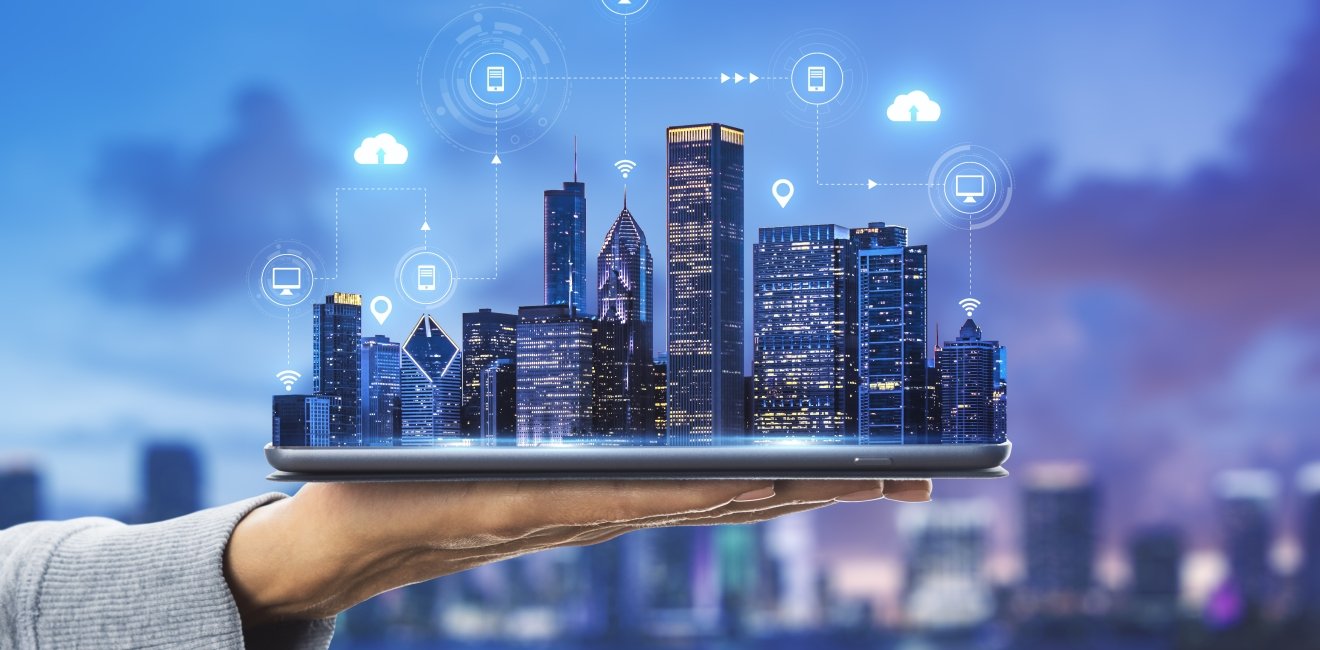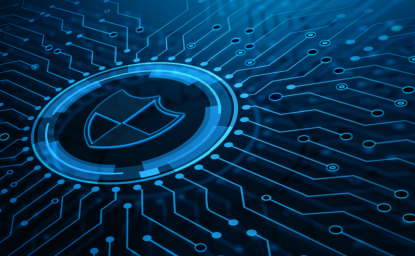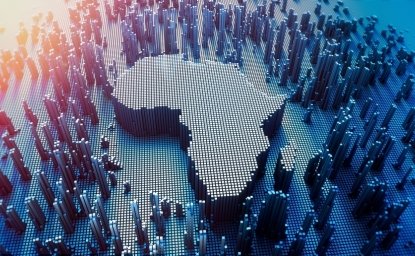
A blog of the Science and Technology Innovation Program
5G networks will be essential to how industries compete, innovate, and generate value; how people communicate and interact locally and globally; and how states pursue security for their citizenry.
Yet, due in large part to its significance, it can be challenging to sort through the deluge of information and separate fact from fiction. For interested policymakers, industry players, and the public, 5G can simultaneously feel overhyped and underhyped, already here and a long way off, a pressing national security concern and an economic fairytale.
Here, I walk through four common 5G myths and, in the process of debunking them, offer an introduction to the fifth generation of mobile networks.
Myth One: 5G is Just Faster 4G
What functionality does 5G offer users? 5G promises significant increases to speed and the number of connections while decreasing latency. In plain English, 5G networks promise faster and more instantaneous connections for a larger number of devices than 4G networks allowed.
Three changes underpin this transformation.
Speed: Enhanced Mobile Broadband (EMBB) represents a marked improvement to the speed of existing mobile networks through significant increases in bandwidth. Notably, unlike latency and the number of connections, increased speed does not require similarly substantial investments in new telecommunications infrastructure. As a result, EMBB will also be the first benefit users experience as 5G networks are deployed, a reality that feeds into the myth that 5G is just faster 4G.
Latency: Ultra-Reliable Low-Latency Communications (URLLC) allows for near real-time interconnectivity. Put another way, it significantly reduces the lag between requesting and receiving information resulting in seemingly instantaneous connections. Notably, URLLC is essential for use-cases such as driverless cars and remote surgeries. In each, the reliability and immediacy of the connection is essential, most notably to avoid potentially catastrophic real-world consequences.
Number of Connected Devices: Increased network capacity enables Massive Machine Type Communications (MMTC), which is essential for supporting the exponential growth of Internet of Things (IoT) devices more broadly as well as the plethora of specific use-cases many 5G proponents promise. Fleets of driverless cars, increased automation and roboticization of factories, remote-controlled surgeries, and even commercial and military drone-swarms all rely on the ability to bring billions of end-user devices and sensors, which communicate amongst themselves and other parts of the network, online.
These three changes are not trivial. The diversity of use-cases and the business models that are and will continue to emerge rely on and leverage them. They would not be possible if 5G were merely faster 4G.
Myth Two: The 5G Future is Already Here
While 5G is already being deployed in the United States and around the world, we have not yet realized the full potential of 5G, nor are we likely to do so in the short term. This is true both for the state of development and deployment and the use-cases that 5G will support.
5G folds increasing virtualization, cloud computing, edge computing, machine learning, network slicing, and automation into not a network that can support the Internet of Things, but also a network that can support the Internet of Systems (i.e. the digital platforms and tools that will underpin the new digital economy, including production and manufacturing). This requires technical innovative solutions across the telecommunications stack: the Radio Access network (RAN), the core network, and end-user devices.
Unsurprisingly, brownfield (the process of augmenting existing 4G LTE networks) rather than greenfield (stand-alone 5G networks) deployment has dominated rollout of 5G in early movers like the United States. Although this process is ongoing, deployment remains patchwork, within and across countries, and much of the functionality 5G networks will support in the future remains a work in progress. For example, even within the United States, some current deployments of 5G are not much faster than the 4G LTE networks they are slowly replacing, while others are, in fact, slower.
Myth Three: 5G networks will be Terrestrial
“5G” often evokes images of cell towers, sensors, and fiber optic cables. But the terrestrial components of these networks are only one part of the 5G story.
To realize the full potential of ubiquitous, instantaneous connectivity for large numbers of devices globally, terrestrial telecommunications systems will not be enough. Satellites will need to play a far greater role, with terrestrial and space-based components working in tandem to carry out a wider diversity of functions. For example, providing coverage for devices on the move (such as a ship at sea, a plane flying between cities, or a car driving across the United States) as well as a proliferation of connections in more remote and rural areas.
As such, how we integrate terrestrial and space-based components will determine the type and degree of connectivity 5G networks will enable across the United States and around the world.
Myth Four: National Security Concerns Center on the Presence of Chinese Vendors in 5G Networks
Communications networks have long been the target of malicious actors. This is a trend that is only likely to continue with 5G and be exacerbated by concerns stemming from both technical foundations and, potentially, the vendors building out these increasingly software defined and decentralized networks.
Vendor Specific Concerns: Security concerns associated with 5G can be amplified depending on who is developing, operating, and maintaining the technology in question. These concerns are akin to an untrustworthy company being tasked to build your house. They may retain a copy of the key, but even if they do not, the company is intimately familiar with the layout and security of your home and can use that knowledge to gain access more effectively and efficiently. That company may also be known for poorly securing a home (irrespective of malicious intent) or potentially withhold necessary components for maintenance in the future (your dependence on them becomes a point of leverage). The prospect of building a home is even more alarming if untrusted companies are one of the few options available to you (as is the case currently for integrated, end-to-end 5G network providers).
Non-Vendor Specific Concerns: Recent high profile cyber operations such as the SolarWinds, Microsoft Exchange, and Colonial Pipeline hacks have keenly demonstrated that a malicious actor does not need to build out a system to gain access and inflict harm. Even if network operators avoid untrusted vendors, security concerns remain. These include the proliferation of software, the explosion of connected devices, the security of cloud computing and artificial intelligence leveraged by 5G networks, inherited security concerns from 4G LTE networks in brownfield deployments, the resilience and reliability of an array of supply chains supporting different segments of these networks, etc.
Given the other critical services and infrastructure and vast array of connected devices and systems these networks will support, 5G networks represents (a) a potentially catastrophic single point of failure and (b) a prime intelligence gathering target. As industry and policymakers grapple with these security concerns, it is important to remember that while the presence of untrusted vendors in this ecosystem should not be overlooked or downplayed, neither should non-vendor specific concerns.
Looking for a Deeper Dive? Additional Wilson Center Resources
- For an introduction to and a one-stop-shop for all things 5G, visit 5G Beyond Borders.
- For more information on the intersection between national security and 5G networks, read “5G and Security: There is More to Worry about than Huawei”, “Open RAN and 5G: Looking Beyond the National Security Hype”, “Balancing the Promise and the Peril of 5G: The State of Play in the United States”, and “Seizing Opportunities: Four National Security Questions to Ask About the Use of Satellites in 5G Networks”.
- For an assessment of global trends and opportunities for North American collaboration and cooperation, check out “5G Around the Globe”, “5G & Smart Manufacturing in North America”, and “A North American Method to the 5G Madness: Conclusions from the 5G Beyond Borders Workshop”.
- To learn more about the technological transformations occurring in the Radio Access Network (RAN), watch “Virtualized RAN, Cloud RAN, and Open RAN: Making Sense of the 5G RAN Alphabet Soup” and “Crafting a Transatlantic Approach to 5G: Assessing the Evolution of Open RAN in the United States and Europe”.
- To explore the intersection between 5G and open source hardware, read “The Potential Role of Open Source Hardware in 5G Networks: Capturing an Emerging Debate”.
- To delve into the intersection between space and 5G, read “The Role of Satellites in 5G Networks” at Across Karman (your one-stop-shop for all things space).
Author


Science and Technology Innovation Program
The Science and Technology Innovation Program (STIP) serves as the bridge between technologists, policymakers, industry, and global stakeholders. Read more





